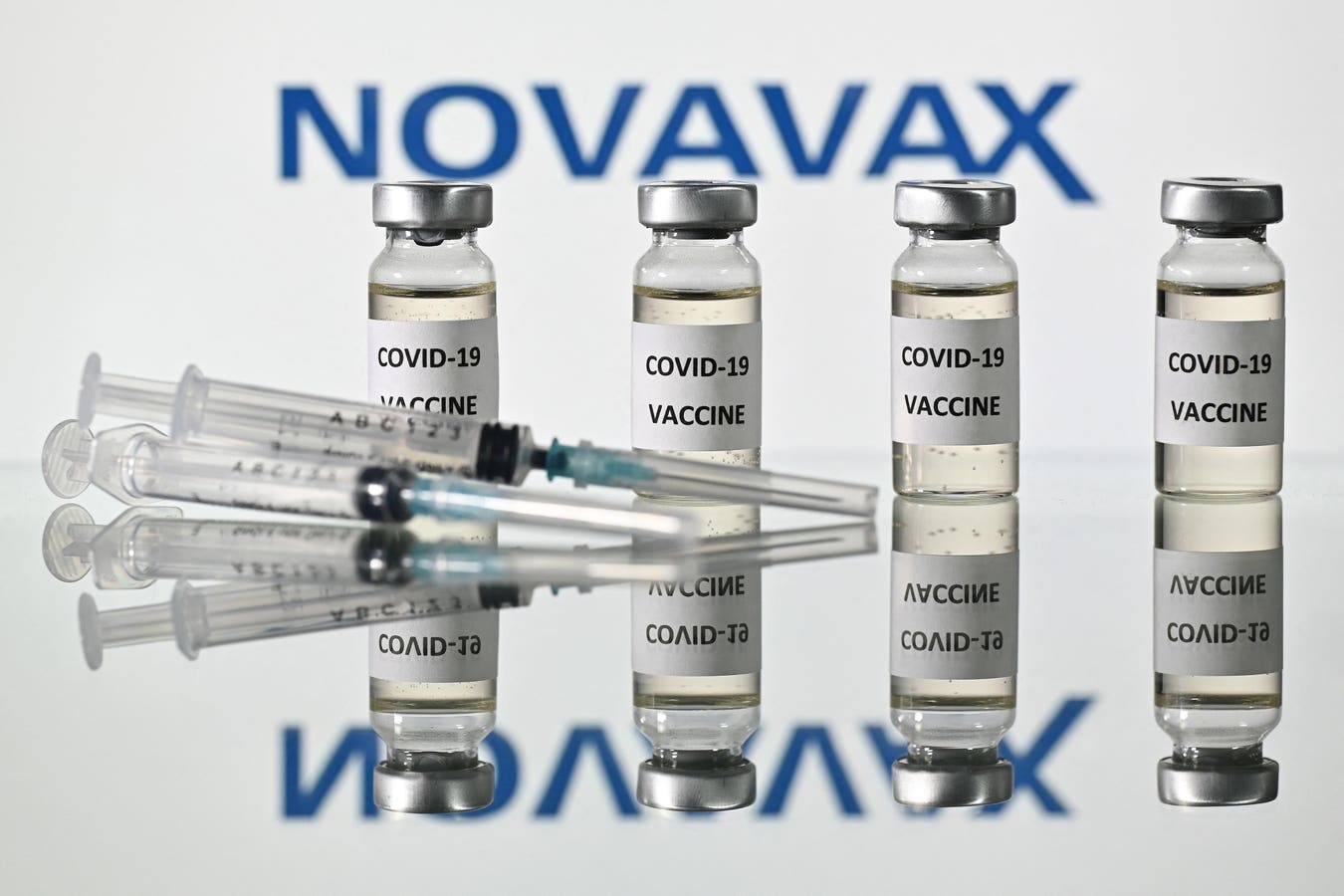An illustration picture shows vials with Covid-19 vaccine stickers attached and syringes with the … More
In a major policy shift last month, Food and Drug Administration officials proposed requiring new clinical trial research with respect to the effectiveness of COVID-19 vaccines in healthy people under 65, including pregnant women, before issuing an updated approval for a broader population. At the same time, in an update to its immunization schedule posted May 29th, the Centers for Disease Control and Prevention include the option of COVID-19 vaccines for healthy children and pregnant women. Based on the language used by CDC, it suggests the agency aims for a shared decision-making approach in which individuals consult with their doctor prior to getting a shot.
We witnessed a preview of the new FDA approach when the agency made an unusual decision to limit the approval of the nation’s only non-mRNA coronavirus vaccine, Novavax’s nuvaxovid, for use only in adults 65 and older or those 12 to 64 who have at least one health problem that puts them at increased risk from COVID-19.
To be indicated for a broader population, the FDA plans to require that vaccine makers conduct booster trials to demonstrate effectiveness in people under 65 or without certain risks. These trials could take a year to complete, according to a STAT report. As such, it’s not something that can be accomplished prior to the autumn, even if Novavax, Pfizer, or Moderna, wished to pursue this pathway.
Similar to annual flu shots, which adapt to new strains, COVID-19 boosters update immunity to target evolving variants. Data from several years of booster campaigns show lower hospitalization and death rates for boosted individuals compared to unvaccinated people or those who haven’t gotten boosters. This particularly applies to the vulnerable subpopulations, stratified by age and underlying health conditions.
The COVID-19 vaccines, both mRNA and non-mRNA, are recommended for anyone who is over 65 or who has a medical condition that can increase the risk of severe illness or death. Underlying conditions include, among other things, obesity, “physical inactivity,” diabetes, clinical depression and being immunocompromised. It’s estimated that between 100 and 200 million Americans will still be eligible for vaccination due to having such health issues.
Nevertheless, this raises questions for people who don’t have underlying health conditions and are under 65 but would like to get a COVID-19 shot this fall. The FDA and CDC appear to differ subtly in terms of their current advice for healthy individuals under 65. Is it possible for these folks to obtain a jab at the pharmacy with no questions asked? Or will they have to go to their doctor and be granted de facto permission to get the shot? Perhaps equally important, will their insurer pay for it?
As the New York Times explains, insurance companies may serve as the “gatekeepers by demanding medical documentation of an underlying condition before agreeing to cover the cost.” The out-of-pocket cost to patients could be as much $140 a shot.
Top FDA officials Prasad and Makary advocate an “evidence-based” approach to COVID-19 vaccination. They also write of aligning policy with Europe. Indeed, in most instances, European public health authorities have adopted a targeted approach that aims at ensuring the elderly and those with underlying health conditions get boosted. This means that outreach campaigns in European countries only target subpopulations for which the vaccine is recommended by the respective public health authority. This is unlike the universal recommendations previously issued by the CDC that didn’t differentiate by age or risk factors. However, the European agencies in charge of vaccine approval, the EMA and MHRA, haven’t suggested marketing authorization changes for boosters, such as narrowing the indication based on age, for any of the approved COVID-19 vaccines. And in virtually all instances, COVID-19 vaccines can be gotten free of charge across Europe regardless of health or age status.








